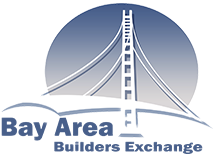from Mark Smith
Advocate, California Builders Alliance
The California Supreme Court recently issued two important decisions reinterpreting and limiting the historically broad application of California’s prevailing wage law: Mendoza v. Fonseca McElroy Griding Co. and Busker v. Wabtec Corp.
Compliance with California’s prevailing wage law on public works projects has always been challenging for contractors and subcontractors due to the broad language used and the harsh penalties that state and local agencies are allowed to impose for failure to strictly comply with the applicable rules and regulations.
California’s prevailing wage law, codified by California Labor Code Section 1774, states:
- The contractor to whom the contract is awarded, and any subcontractor under him, shall pay not less than the specified prevailing rates of wages to all workmen employed in the execution of the contract.
Public works contractors are well aware of the ambiguities inherent in the statute. For example, what work qualifies as a “public work”? And where does “execution of the contract” begin and end? Fortunately for employers, the two cases have set some limits on the reach of the law
Mendoza v. Fonseca McElroy Grinding Co.
Mendoza provided an important clarification to the question defining “execution of the contract” with its holding that that the prevailing wage law does not apply to mobilization work. In other words, anything involving the transport of equipment and material to and from a public works site does not come under the law’s purview. The plaintiffs in Mendoza did not make the argument that their work transporting equipment to and from a public works project site was, in and of itself, a “public work” under California Labor Code § 1720. Rather, plaintiffs argued that they should be paid prevailing wages for the mobilization work on the grounds that pursuant to California Labor Code § 1772, their work was covered because it was performed “in the execution” of a public works contract. In rejecting plaintiffs’ reading of the law, the California Supreme Court explained that California Labor Code § 1772 did not extend coverage beyond that delineated by California Labor Code § 1720, but simply confirms that the law extends to workers employed by contractors or subcontractors. The Court expressly overruled several lower courts’ decisions (including one of its own from 1969) that had adopted a multifactor test for determining whether work ancillary to a construction project, such as transportation of heavy machinery and/or materials, fell within California Labor Code § 1772. As a result of the Court’s ruling in Mendoza, it appears that prevailing wages must now be paid only if the work is encompassed within one of the categories enumerated in Labor Code § 1720, namely, “[c]onstruction, alteration, demolition, installation, or repair…”.
While Mendoza’s ruling clarified that California Labor Code § 1772 does not include mobilization on a public work as an activity for which prevailing wages must be paid, it stopped short of expressly addressing whether certain types of mobilization efforts (i.e., preconstruction, street improvement work, etc.) might fall within the scope of categories of “public work” as defined in § 1720.
Busker v. Wabtec Corporation
Busker involved a dispute between the Southern California Regional Rail Authority (SCRRA), which operates the Metrolink train system, and Parsons Transportation Group, Inc. (Parsons). SCRRA and Parsons entered into a public works contract for a project involving the installation and integration of a multitude of components on trains, along tracks and at centralized control centers with the ultimate goal of preventing train collisions. Plaintiff, Busker, was engaged as a lower tier subcontractor to perform work on rail cars. Busker argued that its work on the rail cars was a covered “public work” under California Labor Code § 1720(a) on the grounds that “public work” includes “construction” and “installation.”
The California Supreme Court disagreed and held that the plaintiff’s work was not on a public work and therefore the prevailing wage law did not apply. According to the Court, not every part of the project was automatically considered a public work even though SCRRA and Parsons had entered into a public works contract. In interpreting the statute, the Court concluded that the terms “construction” and “installation” referred to work performed on fixed structures (i.e., buildings, roads and dams), but not work performed on rail cars. The Court explained its decision by highlighting the fact that the law’s coverage provisions have a long history of amendments, yet none of those amendments have embraced work on rail cars or other rolling stock. Additionally, the Court found it notable that the Department of Industrial Relations has consistently excluded rolling stock from coverage. Similarly to Mendoza, the Court in Busker also rejected plaintiff’s reliance on California Labor Code § 1772 and reiterated that § 1772 does not expand the definition of “public works” under California Labor Code § 1720.
Takeaways
The Supreme Court’s holdings in the aforementioned decisions clarify and narrow the scope of California’s prevailing wage law. While helpful to contractors, these holdings left unaddressed key questions (i.e., do any types of mobilization constitute “public work” under the definition of California Labor Code § 1720), necessitating that courts will undoubtedly continue to hear disputes stemming from this law. As always, we will continue to keep you updated as to new developments as they arise.
---------------------------------------------------
Mark Smith
Advocate
California Builders Alliance
5370 Elvas Avenue ǀ Sacramento, CA 95819
Cell: 916.335.5072
Email: mark.smith@calbuilders.org
Email: mark@smithpolicygroup.com
